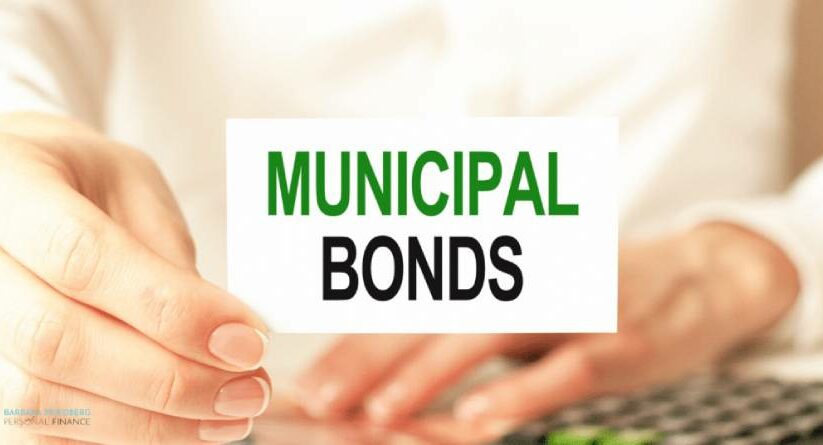Municipal bonds provide investors with tax-free investment returns, which is a significant advantage over traditional income investments. Because of this benefit, returns on “municipal bonds” are generally lower, and investors must determine the tax-equivalent return of municipal bonds in order to make a true direct comparison with standard taxable investments.
This is the structure and calculation method of the tax equivalent yield of local bonds.
What is the tax-equivalent yield on municipal bonds?
The tax-equivalent yield on a municipal bond is the effective pre-tax yield that must be earned to equal the tax-free yield on a municipal bond. If you’re considering investing in municipal bonds, it’s important to do this calculation to maximize your after-tax return.
Because municipal bonds often end up with higher after-tax yields, it may make sense to choose lower-yield tax-exempt bonds over traditional high-yield bonds.
As an investor, your concern is what ends up in your pocket after taxes, not the pre-tax returns. This is why you need to accurately compare the pre-tax returns for munis and regular bonds so you can accurately compare the two.
Municipal bonds are a more attractive option for investors in high-tax states and cities, so investors in these areas should always calculate the tax-equivalent rate of return on a potential municipal investment. is needed.
How to calculate the tax equivalent yield of local bonds
Determining the tax equivalent yield of local bonds is relatively easy. To calculate, you need to know the tax rate, including state and city tax rates, if Applicable.
The formula for calculating the tax equivalent yield is:
Tax-equivalent yield = Municipal bond yield / (1 – your total tax rate)
For example, let’s say you pay 24 percent federal tax and 6 percent state tax, and your municipal bonds yield 3 percent.
The tax equivalent revenue of a municipality is 3% divided by the difference of (1 – 0.30). That is 3 / 0.7, or 4.28 percent. In other words, the municipality would pay a taxable amount equivalent to a bond with an interest rate of 4.28%. This interest rate is a standard that makes municipalities more indifferent than regular bonds.
Of course, if your income increases over the next few years and you move into a higher tax bracket, the same bond may have a higher tax-equivalent yield.
For example, let’s say you pay a 32 percent federal tax rate and an 8 percent state tax rate. The same 3% municipal bond would have a tax equivalent yield of 5%. Generally, for a taxable bond, you would need to pay more than 5 percent for your after-tax return to be higher than a 3 percent municipality.
Individual tax rates are an important factor in municipal bond tax-equivalent returns, and the same municipal bond can provide different tax-equivalent returns depending on an investor’s circumstances.
Investors in high-tax brackets due to high yields, high-tax jurisdictions, or a combination of those factors will earn more on municipal bonds than on regular bonds, regardless of reported returns. You need to carefully consider whether this is possible. What matters is what you put in your bag.
How to Compare Taxable Yields and Municipal Bond Yields
The key value of calculating the tax-equivalent yield on municipal bonds is that it allows investors to make wise decisions about which types of bonds to invest in. . A higher total return is not necessarily the best return when taxes are taken into account, especially if you are in a high tax situation.
Other adjustments can also be made based on different tax situations:
- Treasury bonds issued by the U.S. government are tax exempt at the state and local level, but remain taxable at the federal level. If you have to choose between government and municipal bonds, this factor can make municipal bonds’ tax-equivalent yields less attractive.
- Although municipal bonds issued in the tax-paying state are exempt from federal and state taxes, income from municipal bonds issued by another state may be taxed in your state as well.
- Similarly, municipal bond funds are an attractive way to generate a diversified stream of tax-deferred income, but because the fund may own bonds issued in a variety of states, Not all tax benefits will be available.
- Some municipal bonds are bonds that are only issued in certain states, allowing you to take full advantage of that state’s tax benefits and, of course, federal tax benefits.
- Like interest on government bonds, interest on savings bonds, such as Series I bonds, is relatively attractive because it is not subject to state or local taxes.
- When you move from a high-tax state like California or New York to a low-tax state like Texas or Florida, your tax-equivalent income changes.
- For example, if your income decreases significantly due to retirement, you may be moved to a lower tax bracket, which will affect the tax-equivalent return on your investments.
- If you’re looking for capital gains, you should also consider tax-equivalent income from dividend stocks, which may qualify for lower tax rates.
These and other factors can affect the tax revenues of municipal bonds, making them more or less attractive to a fiscal situation. Making the most of your after-tax return can put more money in your pocket and make your money grow faster.
Conclusion
Calculating the tax-equivalent yield of a municipal bond is an important step in determining whether the municipal bond is an attractive investment for you. Municipal bonds typically have lower yields than taxable bonds, but at the end of the day, it’s all about how much money goes into your pocket after taxes.
- Top 5 Health Insurance Stocks to Add to Your Portfolio - July 26, 2024
- 7 Reasons Edamame is Great for Your Health - July 26, 2024
- 2024 Paris Olympics: How Many US Athletes Are Competing? - July 26, 2024





